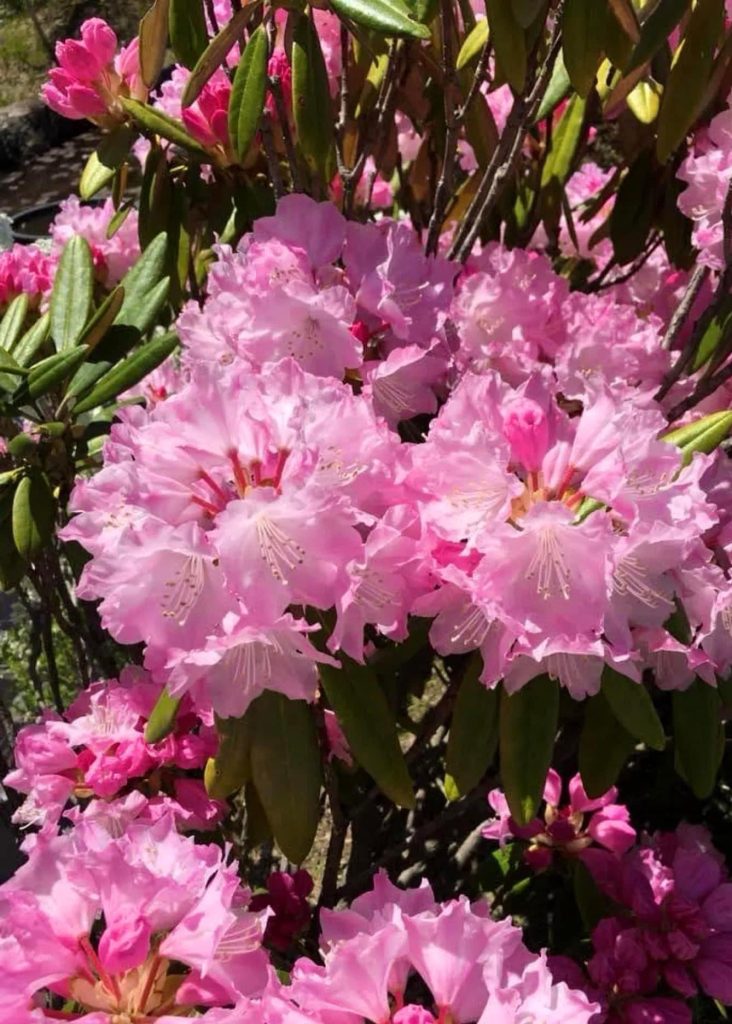
In the garden of an abandoned house in what is known as a marginally viable community, Shakunage (the rhododendrons) bloom gracefully. Carefully tended, their blossoms evoke memories of the kindness of the owner. The buzzing of bees breaks the silence of the surroundings. Shakunage is plant native not only to Nepal and Bhutan in the Asian continent but also to Japan. Introduced to the Western world from China by plant hunters in the mid-19th century, their beauty and grandeur astounded people of that time, leading to numerous hybridizations. Over 5000 horticultural varieties have been developed worldwide, becoming an indispensable part of Western gardens as flowering trees that adorn spring. Some of these varieties have been reintroduced to Asia and Japan, sometimes referred to as ‘Western Shakunage’ Compared to the native Japanese species, they grow faster and are easier to cultivate. Moreover, they boast vibrant colors and lavishness, earning them titles like the ‘Queen of Flowers’ or the ‘Queen of the Mountains.’
いわゆる限界集落の廃屋の庭にシャクナゲ(石楠花)が優雅に咲いています。よく手入れされ、主人の優しさが偲ばれる咲き様です。蜜蜂の羽音が辺りのしじまを破るかの様に響きます。シャクナゲは、ネパールやブータンなどのアジア大陸のほか、日本にも自生している植物です。シャクナゲの原種が19世紀中期、プラントハンターによって中国から西欧にもたらされ、その花の美しさと豪華さで当時の人々を驚嘆させ、数多くの交配が行われてきました。これまで世界各地で5000を超す園芸品種が作出され、西洋では春を彩る花木として庭に欠かせない存在となっています。こうした品種が再びアジアや日本にも導入され、日本では「西洋シャクナゲ」と呼ばれることもあります。日本に自生するニホンシャクナゲに比べ、生長も早く、ずいぶんと作りやすくなっています。さらに、非常に色鮮やかで豪華なものが多く、「花木の女王」または「山の女王」と呼ばれています。
